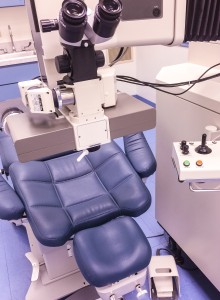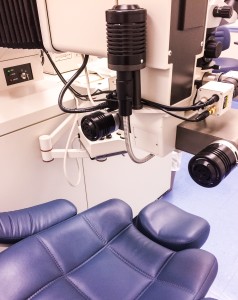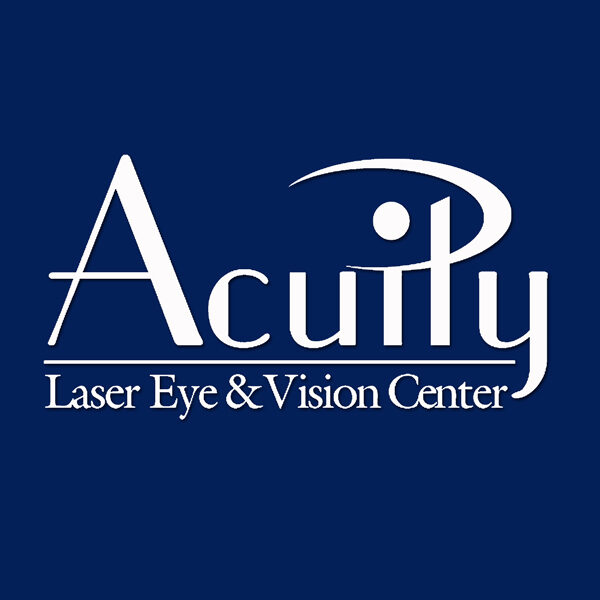 The Nidek EC-5000 Excimer Laser
The Nidek EC-5000 Excimer Laser
at Acuity
What is it? The Nidek EC-5000 Excimer Laser System is an ophthalmic laser system for refractive surgery of the cornea designed to correct the vision of patients with refractive errors (nearsightedness and astigmatism) by laser assisted in-situ keratomileusis (LASIK).
How does it work?
LASIK corrects nearsightedness and astigmatism by changing the shape of the cornea, the clear covering of the front of the eye, using an excimer laser. A thin flap is cut in the cornea and a hinge is left at one end of this flap. The flap is folded back revealing a middle section of the cornea. The laser fires a stream of up to 40 pulses of invisible ultraviolet light per second. Each pulse removes a tiny bit of tissue by evaporating it. To treat nearsightedness, the pulses are placed in a pattern that makes the cornea flatter. After the procedure, the flap is replaced.
Excimer laser light does not go through the cornea so it does not harm the iris, lens, or retina. The laser produces very little to no heat and is controlled by the doctor during the operation, with the aid of an electronic eye tracking system so that all laser pulses reach the intended point of correction.
Like regular LASIK, Topography-Assisted LASIK measures the natural seeing ability of the eye for your nearsightedness and astigmatism to plan the treatment for your eye. In addition, however, it uses a map of the shape of your cornea to treat small, local defects that cannot be corrected by glasses.
This approval includes software, called Final FitTM, which uses data about the surface of the cornea in addition to eye prescription information to determine the pattern of corneal tissue to be removed during treatment to correct nearsightedness and/or astigmatism.
When is it used?
LASIK is a surgical procedure intended to reduce a person’s dependency on glasses or contact lenses. This particular device may be used in cases where there are minor topographical variations in the cornea that may not be best captured using wavefront aberrometry (technique to measure optical imperfections in the eye), as in use with other types of LASIK devices.
The Nidek EC-5000 Excimer Laser System is approved for topography-assisted LASIK treatment using the Final Fit custom ablation treatment planning software for the reduction or elimination of nearsightedness with astigmatism. You would be a good candidate if you are 21 years of age or older and your vision is:
from -1.0 to -4.0 diopters with astigmatic refractive errors more than -0.5 diopters up to -2.0 diopters at the spectacle plane with a manifest refraction spherical equivalent (MRSE) of -1.0D to -5.0D.
unchanged no more than ±0.5 diopters in the last year.
What will it accomplish?
Even if astigmatism and nearsightedness is properly corrected, there still may be other types of optical defects, such as halos or glare, which can reduce the quality of vision. These irregularities may be caused by problems with the cornea or with the natural lens inside the eye. Normally, custom wavefront-guided LASIK treats these defects for the whole eye as a system, but if most of the irregularities are from the natural lens, the treatment can leave the cornea more irregular, or bumpy than it was before the treatment.
In contrast, topography-assisted LASIK assumes that it is more important to create a smooth corneal surface than it is to treat irregularities from the lens.
When should it not be used?
You should NOT have LASIK if any of the conditions below apply. In these cases, the risk is greater than the benefit. Therefore LASIK should not be used in:
Patients with severe dry eye.
Patients with recurrent corneal erosion.
Patients with advanced glaucoma.
Patients with collagen vascular, autoimmune or immunodeficiency diseases.
Pregnant or nursing women.
Patients with thin and cone-shaped bulging of the cornea (keratoconus), suspected keratoconus, or unstable or irregular central keratometry readings.
Patients with uncontrolled diabetes.
Patients with eyes that have a calculated residual stromal bed thickness that is less than 250 microns (correction too high for the amount of tissue present).
Patients with thin corneas or eyes for which a preoperative OPD-Scan (containing certain information regarding irregularities for eye alignment) cannot be obtained.
Patients who have uncontrolled eye movements (nystagmus) or another condition that prevents a steady gaze. You need to be able to keep your eyes still during treatment. The accuracy of your refractive results will be affected if you cannot keep your eyes still during treatment.


